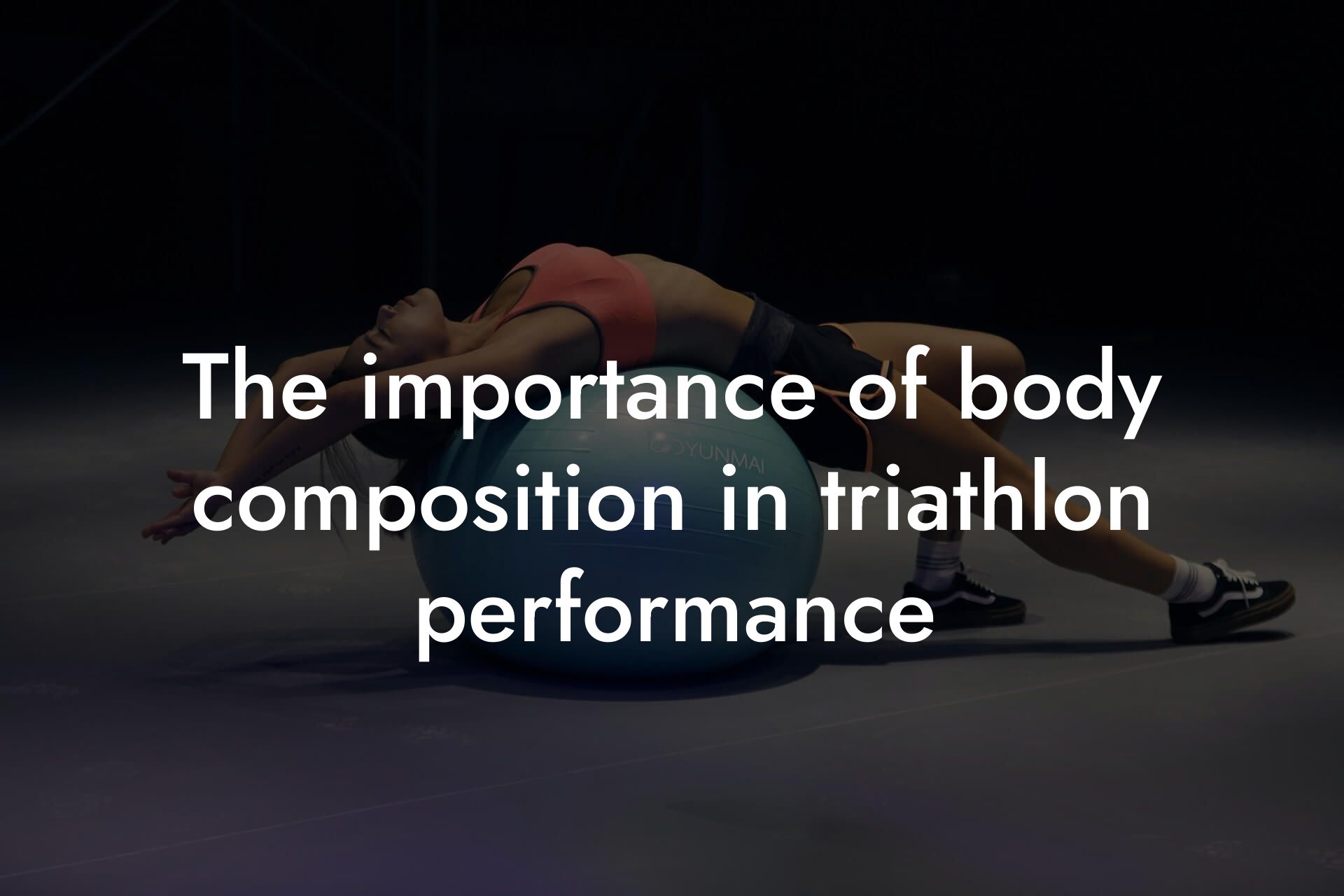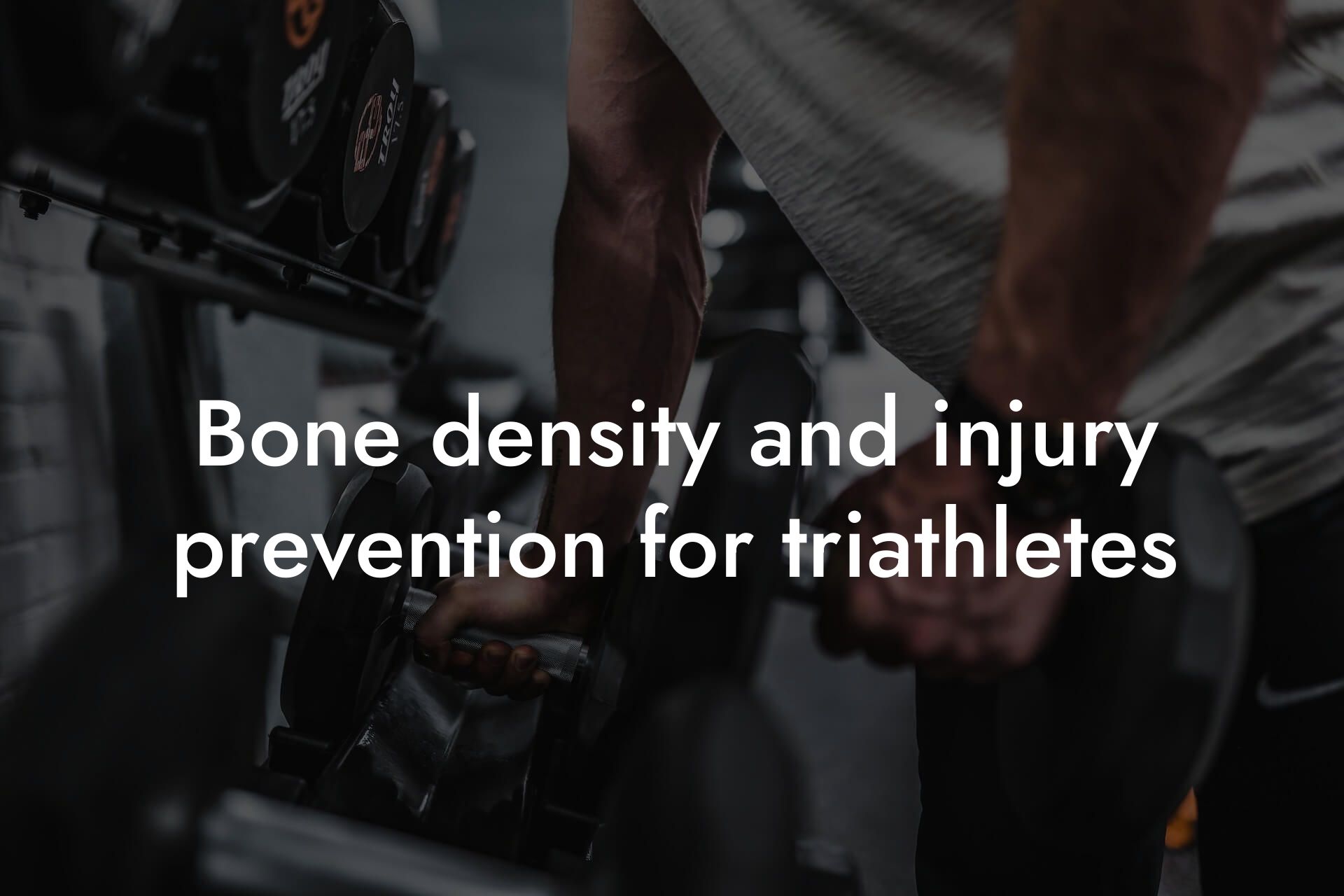As a high-earning professional, you understand the importance of maintaining a healthy and fit physique. Engaging in triathlon training, which involves swimming, cycling, and running, can be an excellent way to challenge yourself and improve your overall physical appearance and health. However, balancing training for these three disciplines can be daunting, especially if you're new to the sport. In this article, we'll provide you with a comprehensive guide on how to balance your training for swimming, cycling, and running, ensuring you achieve your fitness goals while minimizing the risk of injury or burnout.
Table of Contents
Understanding the Demands of Each Discipline
Before we dive into the specifics of balancing training, it's essential to understand the unique demands of each discipline. Swimming, cycling, and running are distinct activities that require different physiological adaptations and training approaches. Here's a brief overview of each discipline:
Swimming: Swimming is a low-impact, high-intensity activity that requires endurance, strength, and technique. It's an excellent cardiovascular workout that targets the upper body, legs, and core. Swimming is also an effective way to improve flexibility and range of motion.
Cycling: Cycling is a low-impact, high-intensity activity that primarily targets the legs and cardiovascular system. It's an excellent way to improve cardiovascular fitness, build leg strength, and enhance muscular endurance. Cycling can be done indoors or outdoors, making it a convenient option for those with limited time or access to outdoor facilities.
Running: Running is a high-impact, high-intensity activity that requires endurance, strength, and technique. It's an excellent way to improve cardiovascular fitness, build leg strength, and enhance muscular endurance. Running can be done outdoors or on a treadmill, making it a versatile option for those with varying schedules and preferences.
Creating a Balanced Training Plan
A well-structured training plan is essential for balancing swimming, cycling, and running. Here are some tips to help you create a balanced training plan:
Set specific and realistic goals: Identify your strengths, weaknesses, and goals for each discipline. Set specific, measurable, and achievable goals for each activity, and prioritize them accordingly.
Develop a periodized training plan: Divide your training into specific periods or phases, each with a unique focus. For example, you may focus on building endurance during the off-season and intensity during the competition season.
Incorporate rest and recovery: Adequate rest and recovery are crucial for allowing your body to adapt to the demands of training. Ensure you have at least one or two rest days per week, and prioritize active recovery techniques like stretching, foam rolling, and self-myofascial release.
Integrate strength training: Incorporating strength training can help improve your overall performance in each discipline. Focus on exercises that target your core, legs, and upper body, such as squats, lunges, deadlifts, and bench press.
Sample Training Plan
Here's a sample training plan to help you balance swimming, cycling, and running:
Monday:
- Swimming: 30-minute easy swim (technique focus)
- Strength training: Lower body (squats, lunges, deadlifts)
Tuesday:
- Cycling: 45-minute easy ride (endurance focus)
- Running: 20-minute easy run (technique focus)
Wednesday:
- Rest day
Thursday:
- Swimming: 30-minute interval swim (intensity focus)
- Strength training: Upper body (bench press, rows, shoulder press)
Friday:
- Cycling: 45-minute interval ride (intensity focus)
- Running: 20-minute interval run (intensity focus)
Saturday:
- Long ride or run (endurance focus)
Sunday:
- Rest day or active recovery (stretching, foam rolling)
Managing Injuries and Burnout
Injuries and burnout are common pitfalls for triathletes. Here are some tips to help you manage injuries and burnout:
Listen to your body: Pay attention to your body's signals, and take rest days or modify your training plan as needed.
Incorporate injury prevention exercises: Incorporate exercises that target your core, glutes, and legs, such as planks, bridges, and clam shells, to help prevent injuries.
Gradually increase intensity and volume: Avoid sudden changes in your training plan, and gradually increase intensity and volume to allow your body to adapt.
Seek professional guidance: Consult with a coach, trainer, or medical professional if you experience persistent injuries or burnout.
Nutrition and Hydration
Nutrition and hydration play critical roles in supporting your triathlon training. Here are some tips to help you optimize your nutrition and hydration:
Fuel your body: Focus on consuming complex carbohydrates, lean protein, and healthy fats to provide energy and support recovery.
Hydrate adequately: Aim to drink at least 8-10 glasses of water per day, and make sure to hydrate during and after exercise.
Electrolyte management: Incorporate electrolyte-rich foods and supplements, such as bananas, dates, and coconut water, to help manage electrolyte imbalances.
Recovery nutrition: Focus on consuming a balanced meal or snack within 30-60 minutes after exercise to support recovery and muscle repair.
Equipment and Gear
Having the right equipment and gear can make a significant difference in your triathlon training. Here are some essentials to consider:
Swimming:
- Goggles
- Swim cap
- Fins
- Pull buoy
Cycling:
- Road bike or triathlon bike
- Cycling shoes
- Helmet
- Cycling computer or GPS device
Running:
- Running shoes
- Socks
- Watch or fitness tracker
- Headphones (optional)
Balancing training for swimming, cycling, and running requires careful planning, attention to detail, and a willingness to adapt. By understanding the demands of each discipline, creating a balanced training plan, managing injuries and burnout, and optimizing nutrition and hydration, you can achieve your triathlon goals and maintain a healthy, fit physique. Remember to stay flexible, listen to your body, and seek professional guidance when needed. With dedication and perseverance, you can take your triathlon training to the next level and achieve success in this challenging and rewarding sport.
At Tano Performance Group, we understand the importance of maintaining a healthy and fit physique. Our DEXA machine provides a comprehensive body assessment, giving you the information you need to optimize your training and nutrition plan. Contact us today to learn more about our services and how we can help you achieve your fitness goals.
Frequently Asked Questions
What is the importance of balancing training for swimming, cycling, and running?
Balancing training for swimming, cycling, and running is crucial to avoid overtraining, prevent injuries, and optimize performance. When you focus too much on one discipline, you risk neglecting the others, leading to imbalances in your fitness level and increasing the risk of burnout. By balancing your training, you can improve your overall endurance, strength, and technique in each discipline.
How do I know if I'm overtraining?
Common signs of overtraining include fatigue, decreased performance, insomnia, loss of appetite, and mood disturbances. If you're experiencing any of these symptoms, it may be a sign that you need to reassess your training schedule and make adjustments to avoid burnout.
What is the ideal ratio of swimming, cycling, and running in a triathlon training program?
The ideal ratio of swimming, cycling, and running in a triathlon training program varies depending on the individual's goals, fitness level, and experience. A general rule of thumb is to allocate 20-30% of your training time to swimming, 40-50% to cycling, and 30-40% to running. However, this ratio may need to be adjusted based on your specific needs and goals.
How do I incorporate strength training into my triathlon training program?
Incorporating strength training into your triathlon training program can help improve your power, speed, and endurance. Focus on exercises that target your core, legs, and glutes, such as squats, lunges, and deadlifts. Aim to do strength training 1-2 times per week, with at least one day of rest in between.
What is the best way to structure my training week?
A well-structured training week should include a mix of endurance, strength, and rest days. A typical training week may include 3-4 days of swimming, 2-3 days of cycling, 2-3 days of running, and 1-2 days of strength training. Be sure to include rest days or active recovery days to allow your body to recover and rebuild.
How do I fuel my body for optimal performance?
Fueling your body for optimal performance involves consuming a balanced diet that includes plenty of complex carbohydrates, lean protein, and healthy fats. Aim to eat a meal or snack that includes a combination of these macronutrients 1-3 hours before training, and refuel with a mix of carbohydrates and protein within 30-60 minutes after training.
What are some common nutrition mistakes that triathletes make?
Common nutrition mistakes that triathletes make include not fueling adequately before training, not staying hydrated, and not replenishing energy stores after training. Additionally, many triathletes make the mistake of relying too heavily on sports drinks and energy gels, which can lead to an imbalance of electrolytes and sugar.
How do I stay hydrated during training?
Staying hydrated during training involves drinking plenty of water or a sports drink before, during, and after training. Aim to drink at least 16-20 ounces of fluid 1-2 hours before training, and take in 4-8 ounces of fluid every 10-15 minutes during training.
What are some common injuries that triathletes experience?
Common injuries that triathletes experience include swimmer's shoulder, cyclist's knee, and runner's knee. These injuries are often caused by overuse, poor technique, and inadequate training. It's essential to listen to your body and take rest days or modify your training as needed to prevent injuries.
How do I prevent swimmer's shoulder?
Preventing swimmer's shoulder involves maintaining proper technique, incorporating strength training exercises that target the shoulder muscles, and taking regular breaks to stretch and recover. Additionally, using a pull buoy or paddles can help reduce the strain on your shoulders.
What are some tips for improving my cycling efficiency?
Improving your cycling efficiency involves maintaining proper bike fit, using clipless pedals, and focusing on a smooth pedaling technique. Additionally, incorporating strength training exercises that target your legs and core can help improve your power and endurance on the bike.
How do I improve my running efficiency?
Improving your running efficiency involves maintaining proper form, incorporating strength training exercises that target your core and legs, and focusing on a smooth, efficient stride. Additionally, incorporating plyometric exercises such as jump squats and box jumps can help improve your power and speed.
What is the importance of recovery in triathlon training?
Recovery is a critical component of triathlon training, as it allows your body to repair and rebuild muscle tissue, replenish energy stores, and adapt to the demands of training. Adequate recovery involves getting enough sleep, stretching, foam rolling, and incorporating rest days or active recovery days into your training schedule.
How do I incorporate rest days into my training schedule?
Incorporating rest days into your training schedule involves taking 1-2 days off from training per week, or taking a rest week every 4-6 weeks. During rest days, avoid any strenuous activity and focus on stretching, foam rolling, and relaxation techniques such as meditation or deep breathing.
What is active recovery, and how do I incorporate it into my training schedule?
Active recovery involves engaging in low-intensity activities such as yoga, walking, or light swimming to promote blood flow and aid in the removal of waste products. Incorporating active recovery into your training schedule can help reduce muscle soreness and improve overall recovery.
How do I know if I'm ready for a triathlon?
You're ready for a triathlon when you've consistently trained for at least 12-16 weeks, have built up your endurance and strength in each discipline, and have practiced transitions and nutrition strategies. Additionally, you should have a solid understanding of the race course, rules, and logistics.
What are some common mistakes that triathletes make during a race?
Common mistakes that triathletes make during a race include starting too fast, not fueling adequately, and not staying hydrated. Additionally, many triathletes make the mistake of not having a solid race strategy, which can lead to poor performance and disappointment.
How do I develop a race strategy?
Developing a race strategy involves setting realistic goals, understanding the race course and conditions, and having a plan for nutrition, hydration, and pacing. Additionally, it's essential to have a plan for unexpected situations such as mechanical issues or bad weather.
What are some tips for staying motivated during triathlon training?
Staying motivated during triathlon training involves setting realistic goals, finding a training buddy or joining a triathlon club, and rewarding yourself for milestones achieved. Additionally, focusing on the process rather than the outcome, and celebrating small victories can help keep you motivated and engaged.
How do I balance triathlon training with work and family responsibilities?
Balancing triathlon training with work and family responsibilities involves setting realistic goals, prioritizing your time, and communicating with your loved ones about your training schedule. Additionally, finding a training buddy or joining a triathlon club can provide a sense of accountability and support.
What are some resources available to triathletes?
Resources available to triathletes include online training plans, coaching services, and triathlon clubs. Additionally, there are many books, articles, and online forums dedicated to triathlon training and racing.
How do I stay safe during triathlon training?
Staying safe during triathlon training involves following traffic laws and regulations, wearing proper safety gear such as a helmet and reflective clothing, and swimming in designated areas. Additionally, it's essential to listen to your body and take regular breaks to avoid exhaustion and injury.
What are some tips for transitioning from one discipline to another during a triathlon?
Tips for transitioning from one discipline to another during a triathlon include practicing transitions during training, having a solid plan for nutrition and hydration, and staying focused and calm under pressure. Additionally, having a smooth and efficient transition can help reduce overall race time and improve performance.
Here are some related articles you might love...
- The importance of body composition in triathlon performance
- Using DEXA scans to monitor triathlete health
- Bone density and injury prevention for triathletes
- Recovery techniques for triathletes after races
- Nutrition strategies for triathlon training and competition
- Strength training for triathletes to improve overall performance
- Off-season training strategies for triathletes
- The role of lean muscle mass in triathlon events
- Reducing body fat for better endurance in triathlons
Zak Faulkner
Zak Faulkner is a leading authority in the realm of physical health and body composition analysis, with over 15 years of experience helping professionals optimise their fitness and well-being. As one the experts behind Tano Performance Group, Zak has dedicated his career to providing in-depth, science-backed insights that empower clients to elevate their physical performance and overall health.
With extensive knowledge of DEXA technology, Zak specializes in delivering comprehensive body assessments that offer precise data on body fat, muscle mass, bone density, and overall physique. His expertise enables individuals to make informed decisions and achieve their fitness goals with accuracy and confidence. Zak’s approach is rooted in a deep understanding of human physiology, combined with a passion for helping clients unlock their full potential through personalised strategies.
Over the years, Zak has earned a reputation for his commitment to excellence, precision, and client-focused service. His guidance is trusted by top professionals who demand the best when it comes to their health. Whether advising on fitness programs, nutritional strategies, or long-term wellness plans, Zak Faulkner’s insights are a valuable resource for anyone serious about taking their health and fitness to the next level.
At Tano Performance Group, Zak continues to lead our Content Team revolutionising how professionals approach their physical health, offering unparalleled expertise that drives real results.




